Kandy washing machine does not fill with water
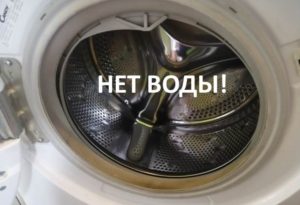 You can't wash things with an empty tank. If the Candy washing machine does not draw water, but only hums, then something is clearly wrong. Many things can lead to problems with drum recruitment - you will have to check all the “sore points” and eliminate the problem. We suggest you figure out where to start and how to finish.
You can't wash things with an empty tank. If the Candy washing machine does not draw water, but only hums, then something is clearly wrong. Many things can lead to problems with drum recruitment - you will have to check all the “sore points” and eliminate the problem. We suggest you figure out where to start and how to finish.
How to find a fault?
There are enough reasons why the machine does not fill with water. Filling problems can be caused by a blockage in the inlet hose, a loose hatch, or a failure of the control board. What makes troubleshooting easier is that some problems occur more often, while others, on the contrary, are very rare and are manifested by additional “symptoms”. As a rule, the user has to deal with one of the following breakdowns.
- The inlet valve is broken. In this case, the powder receptacle will remain dry, and the detergent added to it will remain untouched. The final proof will be to check the part: you need to apply 220 Volts to the valve and listen. If the membrane “triggered” and a characteristic click was heard, it means there are no problems with the closure. The absence of sounds and other reactions will indicate a malfunction of the element. It will have to be removed and replaced with a new one.
- The inlet filter is clogged. To prevent debris from the water supply from getting into the machine, the inlet hose is equipped with a protective filter mesh. If there is too much debris and lime deposits stuck to it, then water will not be able to seep into the machine. The washer will try to fill the drum, making an unusual buzzing noise.
- The pressure switch is damaged. This part is also called a water level sensor and monitors the fullness of the tank.A faulty device will not be able to accurately measure pressure and will send a signal to the control board that the set has completed. Naturally, the module will accept the information and cancel the flood command. It is not difficult to verify that the pressure switch is working: you need to find it and test it. It is located immediately under the top cover of the washer and consists of a “washer” and a long tube lowered down. To check, the hose is disconnected from the housing and blown through: if clicks are heard, the sensor is working; if not, it is broken or clogged. In the latter case, it needs to be cleaned.

- The control board has failed. It is more difficult if the control module itself prevents the intake of water - it does not recognize signals from the pressure switch and does not send a command to the pump and inlet valve. Probably the resistors or “tracks” on the block have burned out. Home diagnostics and repairs are not advisable in this case - only professionals with relevant experience and special equipment should repair electronics.
- The pump burned out. Before drawing water, the system must make sure that the machine is capable of draining the collected liquid if necessary. If the pump breaks down and does not report its “readiness” to the control board, the module will not start the wash. It is quite difficult to deal with the pump on your own; it is easier and more reliable to turn to professionals.
The Candy washing machine does not fill with water due to problems with the mesh filter, inlet valve, pump, pressure switch or control board.
When inspecting the pressure switch, it is recommended to immediately check the condition of the wiring going from the sensor to the tank. Over time, its insulation wears out and allows air to pass through, which interferes with pressure measurements in the tank. A faulty UBL can also prevent the machine from filling.
The reason for an empty drum is not always due to a problem. Often the problem is a not tightly closed hatch door - the board detects a leak in the system and does not give the command to draw water. Try closing the machine again until the door lock clicks.
Hose and mesh filter
If Candy does not fill the tank after starting the program, but only hums, then most likely the inlet filter or inlet hose is clogged. To check your guess and remove the blockage, you will have to remove the corrugation: loosen the clamps, disconnect it from the body and pipe. Afterwards, we inspect the rubber for debris and kinks, then rinse thoroughly under the tap. A heavily soiled hose, with a thick layer of lime and debris on the walls, needs to be soaked in a warm lemon solution.
We return the clean hose to its place and restart the cycle. If the set is not restored, then there is a problem with one of the filters. First, we inspect and clean the mesh:
- loosen the hose clamp;
- unhook the hose from the washing machine body;
- we look at the valve and look for a mesh filter;
- Use pliers to grab the protrusion provided on the filter;
- pull the filter towards you, without rotation or strong pressure;
- clean the nozzle with a toothpick or needle, getting rid of all stuck debris;
- rinse the mesh under the tap;
- return the filter to its seat and press it into the grooves.
If the filter mesh is clogged, the washing machine will not be able to pour water into the drum.
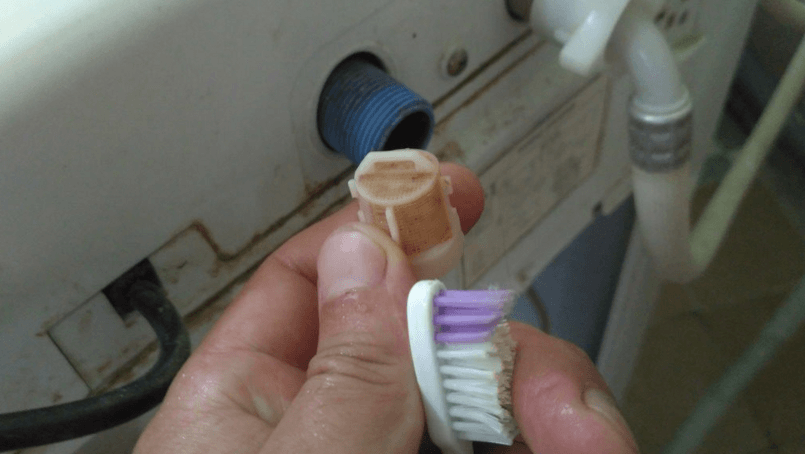
It is immediately recommended to check the second filter, called “deep cleaning”. It is installed in the water pipe, immediately after the tap, taking on the entire blow in the form of scale, impurities and dirt.There is only one way to troubleshoot the problem - take two wrenches, fix the joint with the first, and unscrew the retaining nut with the second. Then we substitute a large basin and let the water flow with strong pressure. The mesh will clean itself with the flow - all that remains is to tighten the fastening back after 2-3 minutes.
Inlet valve and heating element
A faulty inlet valve is one of the most common problems that prevent water from entering the machine. A broken part cannot be repaired, only dismantled and replaced with a new one. The instructions on what to do are as follows:
- Separate the inlet hose from the valve by loosening the clamp;
- drain the residual water from the hose;
- Unscrew the bolts securing the top cover of the housing;
- remove the “top” to the side;
- take a photo or remember the connection of the wires to the coil;
- release the wiring from the “chip”;
- Use pliers to disconnect the pipes from the terminals and drain the water from them;
- unscrew the screw holding the valve;
- pull the valve out of the body;
- take the new valve and place it in the seat;
- secure the position of the valve with a screw, connect the previously removed pipes and wires;
- check the reliability and tightness of the fastenings;
- return the top cover to the body and secure it with bolts;
- Pull the inlet hose onto the valve and secure it with a clamp;
- plug the washing machine into the outlet, open the water supply tap;
- run a quick program and check if the water supply has been restored.
Water does not fill into Candy even if there are problems with the heating element. The fact is that before starting the program, the board requests the readiness of all key components, including the heating element. A faulty heater is silent and prevents the cycle from starting. Most likely, due to a thick layer of scale or damage, the device has failed.
The condition of the heating element is checked as follows:
- the rear panel of the case is removed;
- there is a heating element located under the drum;
- using pliers, the contacts from the thermistor and the supplied ground are disconnected;
- the central nut is loosened;
- the heater body swings and is carefully removed from the seat along with the rubber gasket;
- the cuff is washed and returned to its place;
- a new heating element is installed and fixed;
- The grounding and temperature sensor are connected back.
If everything is in order with the heating element, valve and filters, it’s worth check UBL. Probably, the hatch does not close tightly, the board fixes the low tightness of the drum and gives a “break” to the fence. You will have to turn off the power to the washing machine and diagnose the locking mechanism.
Interesting:
Reader comments
- Share your opinion - leave a comment

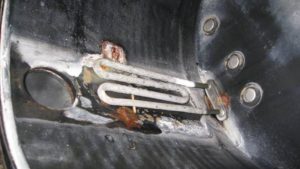

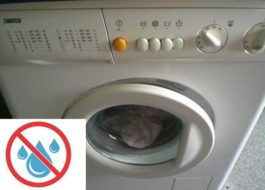
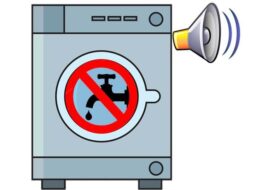


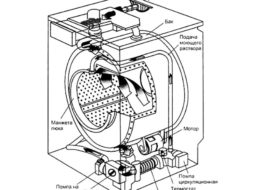














Add a comment